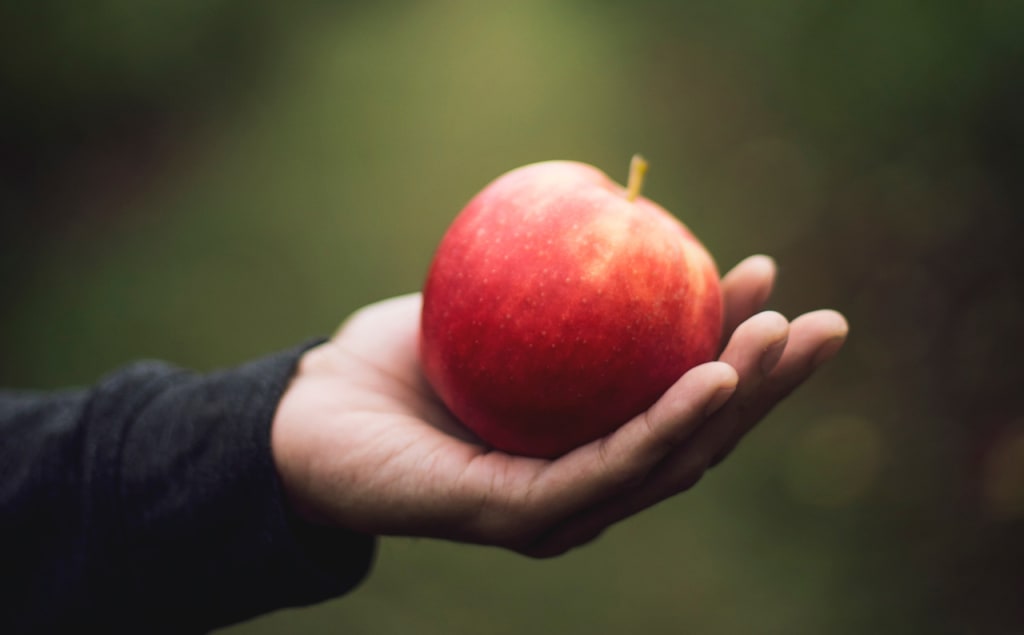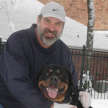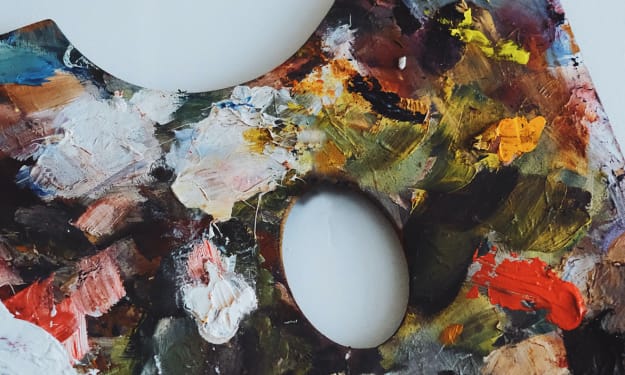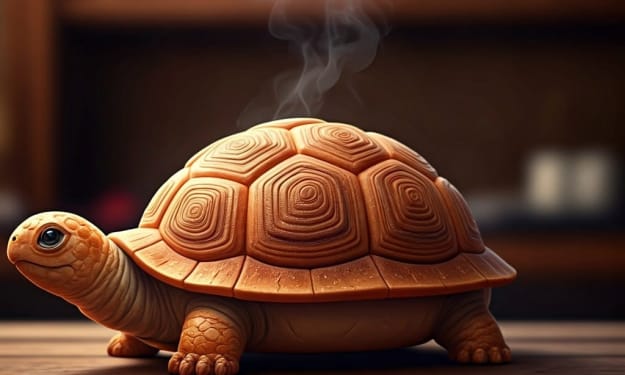
Above all, the monks of St. Gerard had a sense of humor. The sign at their entry gate said, "Drive carefully. This isn't St. Christopher's road." Gerard was the patron saint of children, while travelers fell under Christopher's domain. Back then, I probably qualified on both counts.
St. Gerard's monastery, "on the way to Ballarat," as my boss told me, trying not to laugh, included a vineyard, an orchard that did double duty as a tourist trap, and an elite herd of pure-bred Hereford cattle. Those concerns are listed in reverse order of their economic impact on the monastery and whatever Godly work the brothers did.
Their appreciation of the vineyard's product put a drag on profits. And while the orchard drew traffic, the mark-up on fruit and the gift shop's religious trinkets could only take you so far. The cows, on the other hand, were a windfall on the hoof.
I had a couple of cameras, a sack of lenses, and I knew my way around a dark room. It helped that a lot of Aussies, my boss included, were suckers for an American accent. Thank you, Hollywood. So I was able to land a job as a photographer for a small company that did PR work in the livestock industry. St Gerard's wasn't our biggest client, but there was never any question about getting paid.
Down on the road, where they sold the apples and apricots and needlepoint Bible verses, the monks tended the counters wearing hooded brown robes, like refugees from some medieval bath house. But Brother Hamish greeted me in front of the old, stone monastery in jeans, a crew-necked sweater and flat-brimmed stockman's hat.
"G'day. I'm Brother Hamish."
"Hi! Beautiful place you've got here," I said. The lush pastures spread around us, with trees, vines, and cows fanning out in their respective directions. "The boss said you need a photo of a bull?"
"Indeed we do." He nodded, sizing me up. He'd only dealt with the boss before.
I was twenty-six years old, and Brother Hamish might have had ten or fifteen years on me. But I'd been half-way around the world, and for all I knew, he'd been born and raised on this very plot of ground. So I sized him up right back.
St. Gerard's cattle were legendary. They weren't a very big operation in the scheme of things, but they'd built up their herd carefully over the years, drawing from the best stock Australia had to offer. A St. Gerard cow boasted a pedigree long enough to qualify for the Book of Genesis.
The run-of-the-mill bulls they produced would upgrade the commercial herds that put steaks on tables all across the Commonwealth. But the real money was in the top-line bulls that they sold to other pure-bred Hereford farms. I'd taken pictures of animals that had changed hands for ten, fifteen, twenty times my annual salary. Let's just say that sharpens your focus on your place in the cosmos.
In the dawn of time before Photoshop, you pretty much had to get your picture when you clicked the shutter. You could improve things in the dark room, but it was much more tedious and time-consuming than today. I once snapped a two-thousand pound bull at the Sydney Royal Show with the auctioneer, the seller, a buyer's agent and one of the buyers lined up behind it. But the other buyer couldn't be found.
"You can take a picture of him later and drop it in, can't you?"
"Say what?" I said, adding quickly, as I calculated the number of billable dark room hours. "Sure. We can take care of anything you need."
"What the hell are you doing?" the boss screamed as he slapped the work order on my desk a week later. "We can't charge him that. He's one of our best clients. Just bill him the flat rate for a photo."
I knew a little about photography, but nothing about livestock photography when I started.
"It's very simple," the boss said. "Get the beast to stand up and show its nobility.
"Look at these," he flipped cattle, horse and sheep magazines onto my desk. "The Max Wilson photos are how you want to do it. The other photos are how you don't want to do it."
Those pages were much more instructive than the boss himself. Four legs should be visible. None of them should be awkwardly placed. No horizon or fence line should distract from the line of the animal's back. No unfortunate shadows. A look of eagles. And so on and so forth. I can do this.
Our clients tended to be provincial, in the strictest sense of the word. They'd work around to asking me how their stock compared to the cattle/horses/sheep of America, as if I had any clue about that. But I soon wove my accent into a shtick, where we'd get the bull or stallion or ram set up and I'd cry out, "Lights! Camera! No action, please!"
I got the nickname "Hollywood."
I could take a better photo than my boss, so by and by the calls for the jobs came to me, lucky me. The St. Gerard's account was strictly old school, and they were the last hold out on our client list. I came to convey the boss's apologies, and to win them over.
Now in any given breed, there were only a handful of concerns in Australia that were considered A-List. So when St. Gerard's laid out its business plan, they got most of their foundation stock from Moondarra, arguably the continent's most famous breeder.
In turn, Moondarra would bid up the St. Gerard lots in the public sales, and occasionally buy a cow in a private deal for an eye-popping price. The subtext when these sale results were published was that Moondarra descendants would pay for themselves many times over down through the generations. One hand washes the other.
Likewise, St. Gerard's had been around long enough now that they occasionally bought back a descendant of their own herd which had been bred and raised by an especially good customer. The press releases flowed like milk and honey, and the good news is what kept the boss -- and by extension, me -- in business.
So, it came to pass that one of St. Gerard's customers who had been favored with this type of …uh …reinvestment… had upped the ante by buying a young St. Gerard's bull for an astronomical price, sight unseen, based strictly on pedigree and Polaroids.
Brother Hamish laid out this back story as he led me around to the barn. Suddenly, he stopped and raised his arms to the clear, blue sky, and declared, "The Lord has blessed us with a perfect day for photography, too!"
He was right about that. The sun was not too high, the air held its crispness. We could do this.
Now St. Gerard's had been raising these prized cattle for decades. Each year's calves would be registered with names that corresponded to that year's initial. So their first crop included St. Gerard's Abel. The next year had St. Gerard's Baal, and so on. They'd worked through the whole alphabet, and on the second rotation, the subject of today's photo was going to be St. Gerard's Ablutions.
My heart dropped to the ground and got stuck in my throat on the rebound. I was used to shooting two-thousand pound bulls, rippling mountains of muscle that would dwarf my car. And here was a calf that looked like it was missing its mama.
"That's him?"
"Fair dinkum!"
"St. Gerard's Ablutions?"
"One and only! It's an Australian record price for a bull of his age," Brother Hamish said, beaming. "We think it's a world record, too, but we have people checking on that to be sure."
I quickly went through the three stages of crisis management: Shock, resignation, and, most importantly, desperation.
"Brother Hamish," I stepped very close to him -- I crowded Brother Hamish and thought about putting my arm around his shoulder but decided not to go that far, "I think this calls for, let's say, a creative approach. Do we even know if he's going to be interested in the girl cows?"
I would be laughed out of the livestock photography business if I sent out a shot of this baby in a Max Wilson bull pose.
"We have a little problem of scale. We need to build him up in relation to something else -- strictly for technical concerns, you understand? Do you have any kids here who could lead him, or hug him?"
Brother Hamish showed me what astonishment looks like.
"I beg your pardon?" he said.
"Uhhhh, right. Maybe we could go down to the gift shop and see if we can get some help?"
There was a blond girl, sevenish, eightish, with a pony tail and a floral print dress, looking over the needlepoint Bible verses. Her parents, carrying sacks of fruit, hovered behind her waiting for her to pick something before they checked out.
"G'day," I said to the folks. "Lovely day to visit St. Gerard's! I wonder if you could help us out…"
Dad eyed me suspiciously. After all, Brother Hamish and I weren't wearing brown bathrobes. "And you are . . .?"
"They call me Hollywood," I admitted.
I quickly sketched out the situation. We needed a child to help publicize St. Gerard's good works. It wouldn't take long. There'd be an eight-by-ten glossy in it for free and the fruit was on the house. Brother Hamish added a few good words, and our entourage headed back to get the star of the show.
Brother Hamish got St. Gerard's Ablutions to stand up straight and true, and Mum nudged her daughter forward. We got the girl to hug the calf and smile. I called out, "Lights! Camera!" and let the shutter click. We were good to go.
Brother Hamish threw in a case of St. Gerard's Merlot as the family took their leave.
The photo caused a sensation. It was the first time a livestock press release went out with a picture that was flat-out adorable. To this day, when the old-timers gather in the Members' Room at the Royal, or around the auction ring, they'll call back to that image that gave me a taste of immortality, and they'll congratulate each other for living the right kind of life.
About the Creator
Alan Gold
Alan Gold lives in Texas. His novels, Stress Test, The Dragon Cycles and The White Buffalo, are available, like everything else in the world, on amazon.






Comments
There are no comments for this story
Be the first to respond and start the conversation.